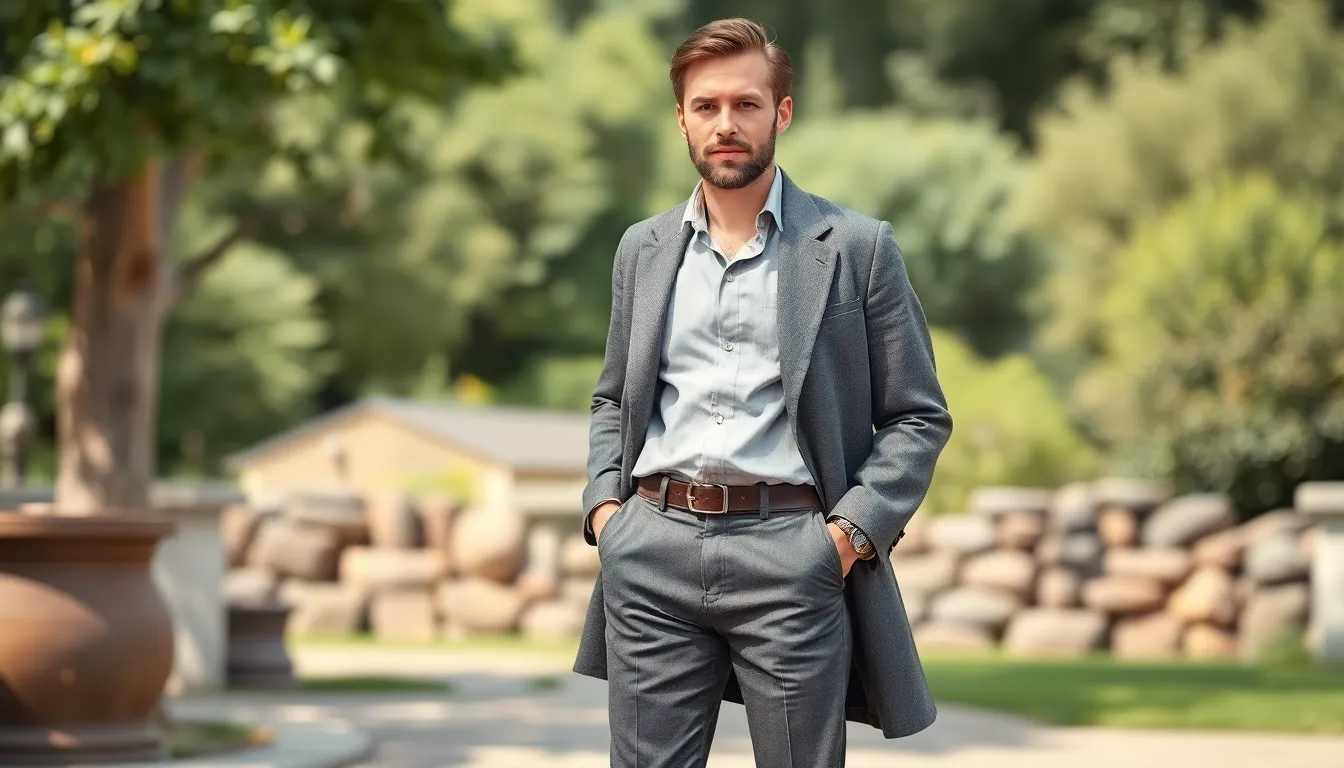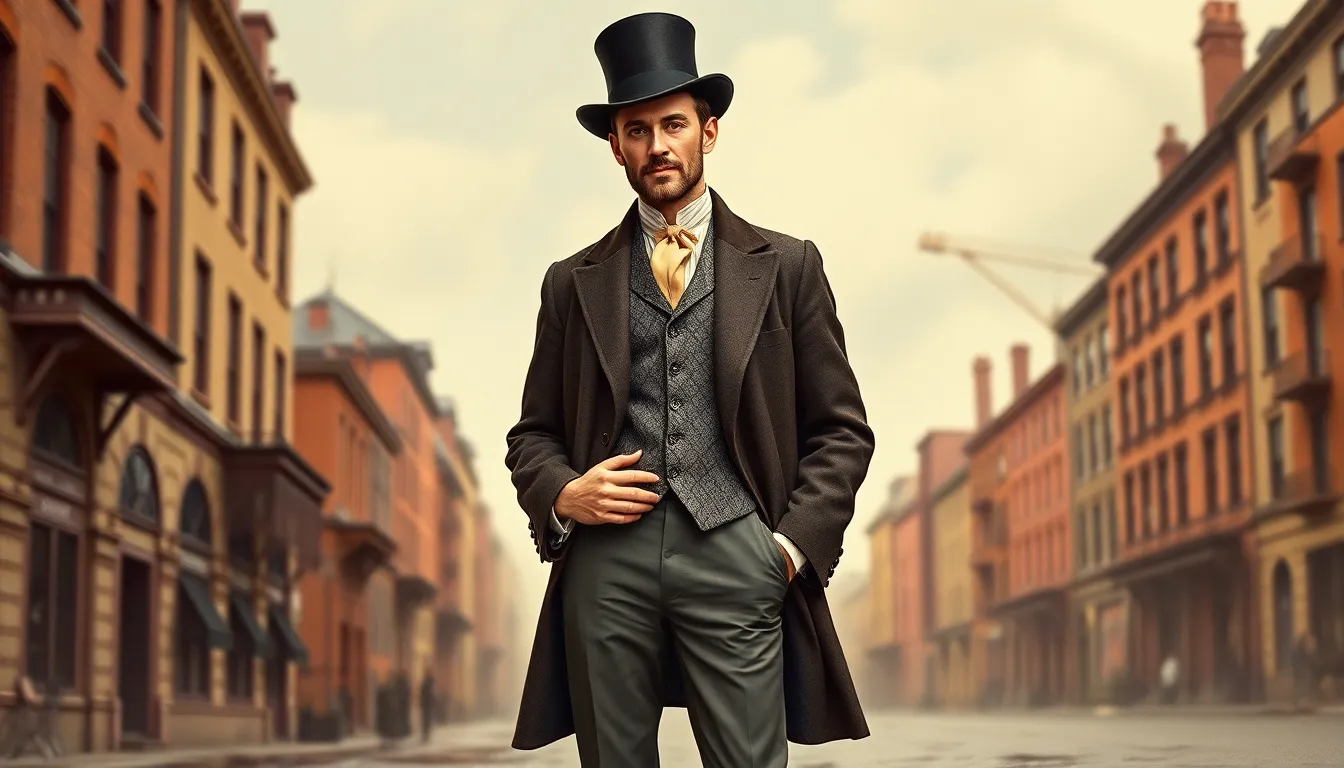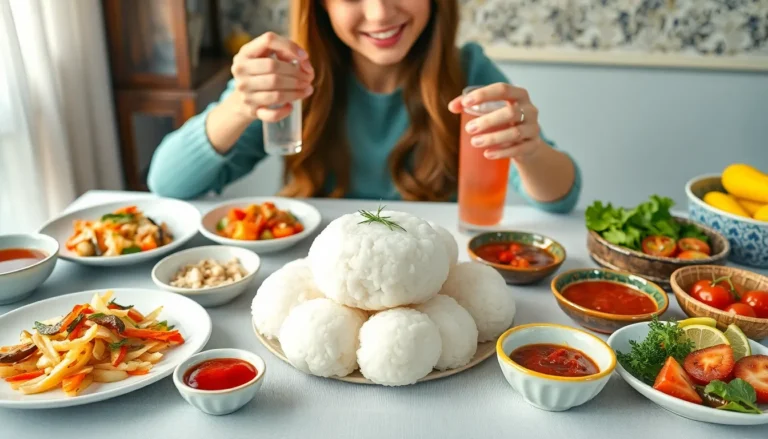Table of Contents
ToggleImagine stepping into a time machine and landing in the 1800s, where men’s fashion was as bold as a mustache twirl. Casual wear back then wasn’t just about comfort; it was a statement. Picture gentlemen strolling through town in wool trousers and crisp linen shirts, looking dapper while dodging horse-drawn carriages. Who knew that simplicity could be so stylish?
In an era where every detail mattered, casual 1800s menswear combined practicality with flair. From the iconic frock coats to the ever-charming waistcoats, these outfits were designed not just to impress but to endure the rigors of daily life. So, let’s dive into this fascinating world where comfort met class, and discover how these timeless pieces can inspire today’s wardrobe choices. After all, who wouldn’t want to channel their inner dandy while sipping coffee at the local café?
Overview of Casual 1800s Mens Wear
Casual menswear in the 1800s combined comfort with elegance, reflecting the social norms and lifestyle of the time. The clothing represented a departure from formal attire, yet maintained an air of sophistication.
Historical Context
During the early to mid-1800s, societal changes influenced menswear. The Industrial Revolution marked a shift in fashion, with mass production making clothing more accessible. Economic growth and urbanization encouraged men to adopt less formal styles, allowing for wool trousers and cotton shirts in everyday use. By the end of the century, returning soldiers from the Civil War popularized simpler fashion, emphasizing functionality and practicality over ornate dressing. This evolution helped define the casual looks that characterized the era.
Key Fashion Influences
Various influences shaped casual menswear in the 1800s. The Romantic movement introduced a focus on individualism, impacting fabric choices and overall aesthetics. As transportation improved, trends from different regions mixed, allowing for unique styles to emerge. Tailoring techniques evolved, and men began to favor relaxed fits over rigid designs. British fashion, in particular, pushed forward iconic garments like the frock coat and waistcoat, which became staples. Accessories like bowler hats and cravats complemented outfits, adding personality and flair to casual wear.
Key Pieces of Casual Attire

Casual wear in the 1800s combined style with practicality. Essential garments included shirts, trousers, and jackets, each reflecting the times.
Shirts and Blouses
Cotton and linen shirts played a crucial role in men’s casual attire. Often featuring high collars and subtle patterns, these shirts offered comfort and breathability. Many men opted for a relaxed fit, which allowed for ease of movement. Some preferred blouses made from lighter fabrics, emphasizing both flair and sophistication.
Trousers and Breeches
Wool trousers emerged as a staple in 1800s casual wear. These trousers provided warmth and durability for daily activities. Breeches remained popular among gentlemen, particularly for semi-formal occasions. Fitted at the waist and often cropped just below the knee, breeches complemented various styles of shoes, enhancing the overall aesthetic.
Outerwear Options
Frock coats became a favored choice for layering during cooler seasons. Utilizing wool or heavy fabrics, these coats featured a tailored look while ensuring warmth. Alternative options included long overcoats and capes, which added a distinctive touch to casual outfits. Vests, often worn underneath coats, also contributed style, showcasing intricate patterns or textures that highlighted personal taste.
Fabrics and Patterns
Fabrics and patterns played a vital role in 1800s menswear, influencing both comfort and style. Gentlemen used a variety of textiles for their daily attire, ensuring both practicality and elegance.
Common Materials Used
Cotton served as a popular fabric choice for shirts, offering breathability and comfort. Linen also contributed to lightweight garments, ideal for warmer weather. Wool trousers became a staple, providing durability and insulation during cooler months. Velvet appeared frequently in vests, adding a touch of luxury to casual ensembles. Tweed gained traction for outdoor wear, combining ruggedness with style. Each material catered to specific needs while ensuring men remained fashionable.
Popular Patterns of the Era
Stripes and checks dominated patterns in 1800s menswear, showcasing a sense of individuality. Plaid emerged as a favorite for both casual and semi-formal wear, often associated with Scottish heritage. Paisley introduced a vibrant, exotic touch, reflecting the influences of global trade. Subtle houndstooth patterns appeared in jackets, adding texture without overwhelming the eye. Solid colors also remained prevalent, allowing for versatility in mixing and matching. Each pattern added an element of personal expression, reinforcing the importance of style during this era.
Accessories to Complete the Look
Accessories play a crucial role in enhancing the overall appearance of casual 1800s menswear. They reflect personal style and serve practical purposes.
Hats and Caps
Top hats, bowler hats, and flat caps represented popular choices for gentlemen. Top hats provided a formal touch, while bowler hats offered a more relaxed style. Flat caps, often made from wool or tweed, showcased comfort and functionality. Each type of headwear complemented different outfits and occasions, allowing men to express their identity. Seasonal variations influenced hat choices, with lighter fabrics used in summer and heavier options in winter. Decorative elements, such as ribbons and feathers, added flair, making these accessories vital for completing the ensemble.
Footwear Choices
Footwear options included a range of styles, from sturdy boots to elegant shoes. Ankle boots, often crafted from leather, provided durability and comfort for daily wear. Dress shoes, designed with polished finishes, suited formal occasions well. Brogues, known for their decorative perforations, became popular in more casual contexts. Materials varied, with leather remaining the primary choice due to its longevity. Color options included black, brown, and tan, offering versatility to match various outfits. Selection of footwear not only influenced comfort but also defined a gentleman’s fashion statement.
Cultural Significance of Casual Wear
Casual wear in the 1800s holds cultural importance, reflecting societal transitions and personal identity. Fashion choices during this era conveyed status and aspirations among men. Wool trousers and linen shirts exemplified a blend of comfort and sophistication, emphasizing a more relaxed lifestyle.
The Industrial Revolution significantly impacted clothing accessibility. As factories emerged, mass production led to less formal styles gaining traction. Restoration of soldiers from the Civil War shifted preferences toward functional attire, shaping everyday menswear.
Regional influences contributed to the variety in casual wear. The Romantic movement encouraged experimentation with fabrics and styles. British fashion introduced staple garments, creating a foundation for diverse casual outfits. This mixture allowed men to adapt their wardrobes according to personal taste and regional trends.
Fabrics and patterns played a vital role in expressing individuality. Cotton and linen ensured comfort, while wool trousers provided durability. Choices in textiles like velvet and tweed added layers of complexity to casual ensembles. Patterns such as checks, stripes, and paisley enabled men to showcase unique personalities.
Accessories also enhanced the cultural significance of casual wear. Hats offered men opportunities to define their identity further. Seasonal variations influenced hat trends, adding an element of creativity to outfits. Footwear options, ranging from sturdy ankle boots to fine dress shoes, completed looks while reflecting a gentleman’s attention to detail.
Among the many elements that shaped 1800s menswear, casual attire served as a canvas for self-expression. This era represented a shift towards practicality without sacrificing style, making casual wear a significant cultural hallmark.
Casual menswear in the 1800s represents a fascinating blend of comfort and style that continues to influence modern fashion. The era’s emphasis on practicality without sacrificing elegance allowed men to express their individuality through carefully chosen fabrics and accessories. As societal shifts paved the way for more relaxed attire, gentlemen embraced garments that not only served functional purposes but also showcased personal taste.
The legacy of this period encourages today’s fashion enthusiasts to draw inspiration from the past. By incorporating elements of 1800s casual wear into contemporary wardrobes, men can achieve a timeless look that balances sophistication with ease.






